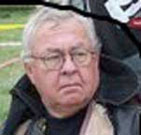 |
Why Do They Do That?
By Bob Rhoades
Senior Scribe
A recent Chat Box entry on another website asked the question about the
number of emergency vehicles on an accident site on Sweitzer St.
The writer categorized it as a “fender bender”. A couple of
respondents theorized that the responders were already on duty so what
difference did it make?
Actually it makes a lot of difference. Emergency response is
based on a lot of things.
1. Experience: most fire departments have responded
to enough Motor Vehicle Accidents (MVA’s) to know exactly what
apparatus to send. Beyond that, most departments have one engine
outfitted to handle any technical rescue be it from a car wreck or
whatever. In other departments a heavy rescue truck will respond
with equipment to handle the removal of a person. If that rescue
truck is not equipped with a pump and water, an engine goes with it.
2. EMS response is usually based on how many victims
the dispatch center has advised are involved, if known.
3. Law enforcement (LE) response is usually no less
than two cruisers which allow both ends of the accident scene to be
secured. It seems that people in general, are drawn to red
lights, so the road has to be completely shut down so that the
responders don’t get run over. Law Enforcement is also charged
with the investigation and in many cases, that alone takes more than
one officer.
4. Because of law suits, fatal accidents are
investigated thoroughly and take a long time. If it’s in the
middle of the night, the FD units will stay on the scene to give
lighting to the LE crews.
5. Laws and standards in some cases mandate who will
respond to what incident.
The case in question was on Sweitzer St and brought the sheriff and
local PD. Over kill?, Not really, it was probably by the
fairgrounds and in that case one side of the road is in the city and
the other side in the county. Therefore, two agencies respond to
sort it out.
It is good that people ask questions about how their money is being
spent so consider this. You will see a more conservative response
from a career fire department simply because there are fewer people on
duty to respond. This is compounded by recent announcements that a
layoff is impending in the Greenville Fire Dept., and the fact that
there is a minimum manning of 4 people on duty. That is one
engine company. That means that if you look out the window and
see a house on fire on one of those days when there are only 4 guys on
duty, you’ll wonder why not very much equipment responded
initially. It also means that if BASF or the Anderson’s/Marathon
plant goes boom, you still get one engine.
Volunteer departments are faced with the same problem in the
daytime. No one works where they live anymore. The amount of
firefighters that can respond from a volunteer department is minimal in
the daytime. That is the reason you may see apparatus from more
than one jurisdiction on the scene of a minor incident. The
National Fire Protection Association (NFPA) develops standards for many
things including, firefighter training, clothing, response, technical
rescue, engine company operations and many others. Incident
Commanders have to take into consideration all of those things.
It is not easy.
The computer aided dispatch system (CAD) tells dispatchers who to send
to what. The Chiefs of the various agencies in Darke County have
developed responses to various incident types based on what they know
about the type of incident the response is to, the actual address and a
lot of other information. All of that information is put into the
CAD and when you call to say your garage is on fire or there is a large
wreck in front of your house, the dispatcher can input the address and
all of those responses appear on the screen. The dispatcher then
dispatches what the screen says. Most emergency scenes have a
golden time, usually about the first two to five minutes. The
incipient stage when the emergency can be handled with little
problems. After that, it won’t be over kill, if anything it will
be under kill.
So that’s the reason why some things happen. A motor vehicle
accident has taken a relatively stable activity, driving a vehicle, and
turned it into an unstable activity, crashed in the middle of the
street. Motor Vehicles have electrical systems, flammable
liquids, explosives in the air bags and whatever else the operator
decided to put into the passenger compartment. Fire and EMS
people have just been faced with yet another problem on a accident
scene, electric cars. General Motors, On Star and the NFPA
launched a large initiative to train responders how to operate around
one of these vehicles and how to secure it.
Bottom line; don’t get awestruck by the red and blue lights. Some
thought actually went into getting them there.
|

